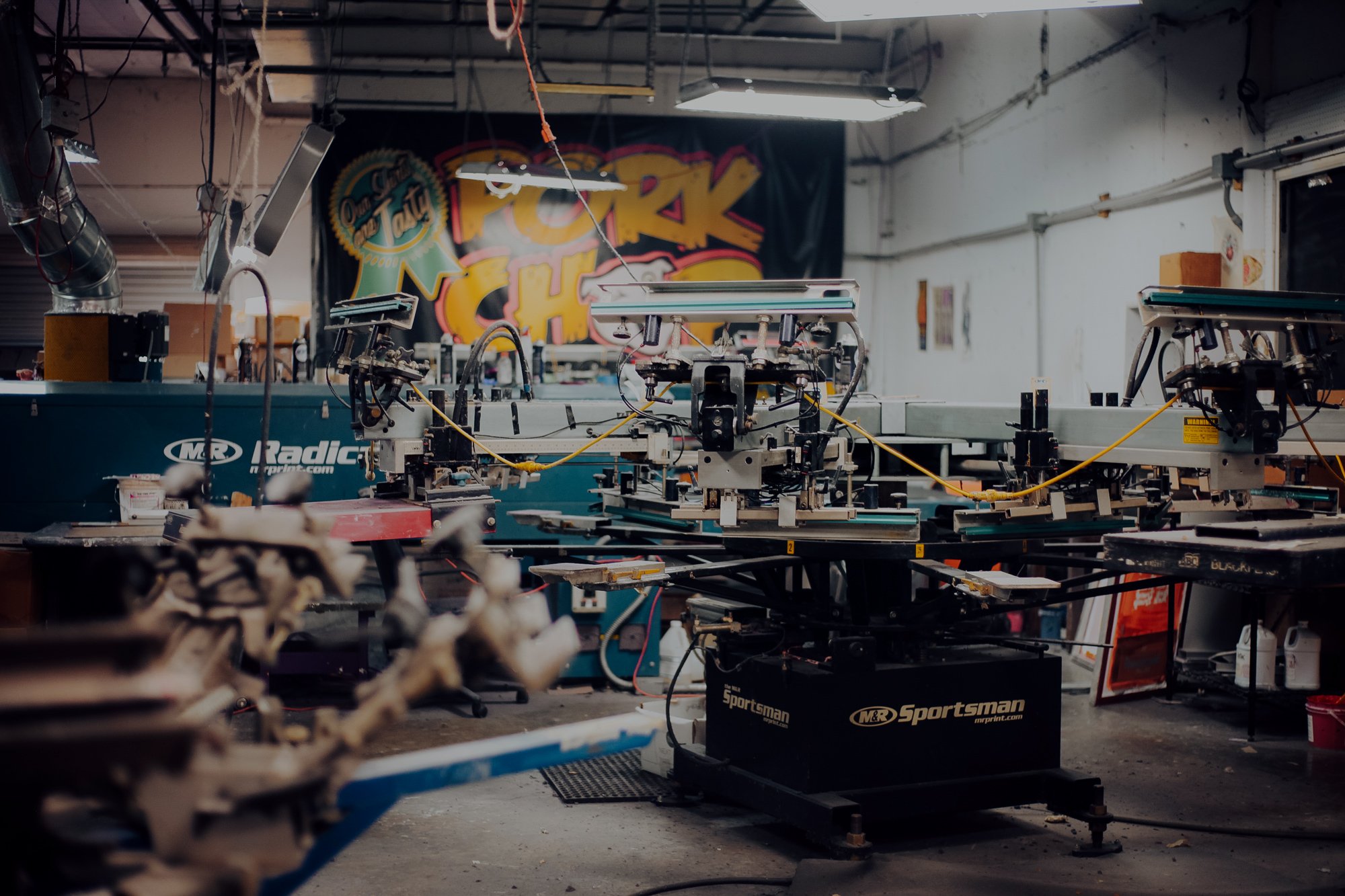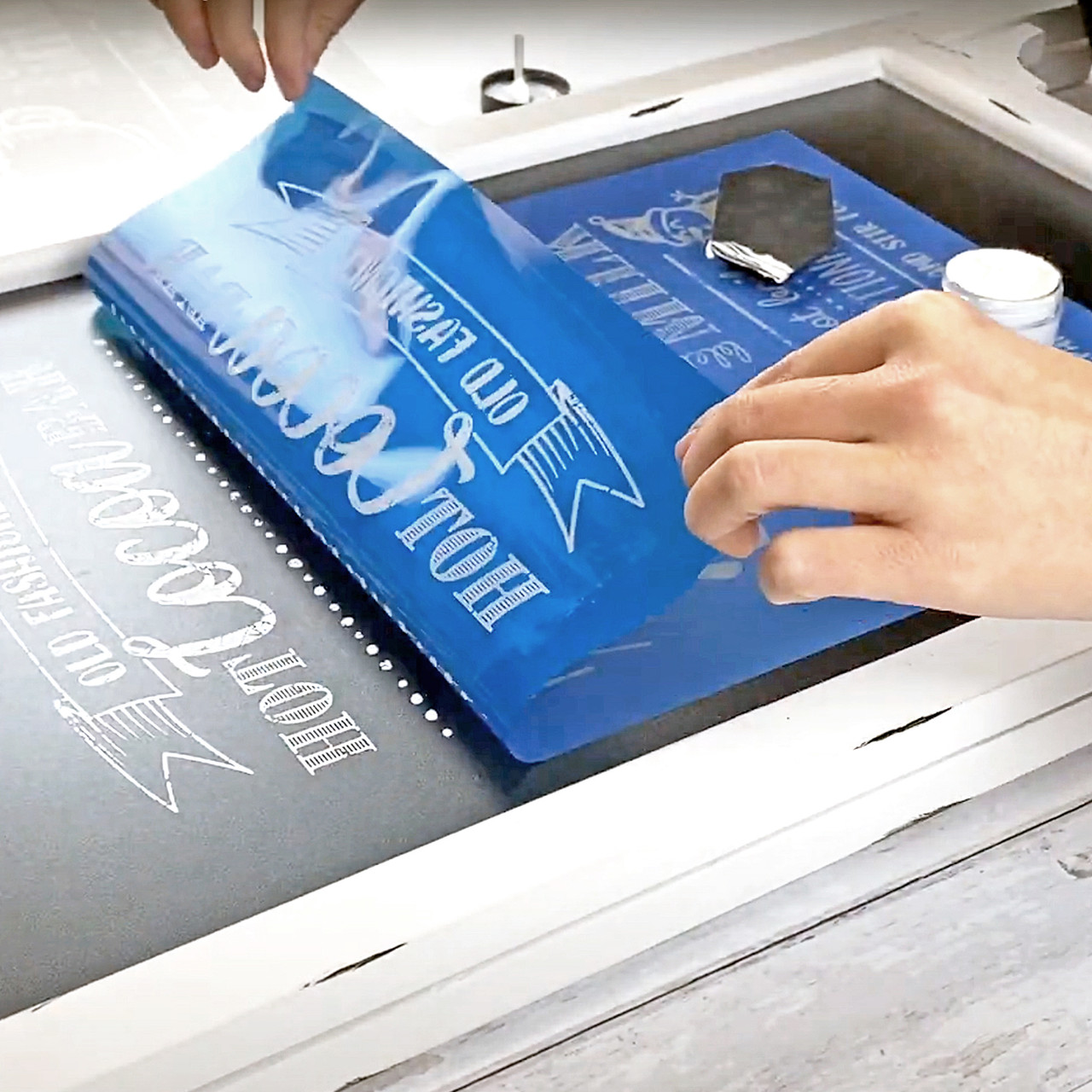Creative T-Shirt Printing Ideas for Small Brands
Creative T-Shirt Printing Ideas for Small Brands
Blog Article
Display Printing Uncovered: Everything You Need to Learn About Tee Shirt and Garment Printing Techniques
Display printing is an interesting technique that integrates art with technique, offering unlimited possibilities for creative thinking. All set to discover the essential components that make display publishing an art form?
The Fundamentals of Display Printing: Exactly How It Functions
When you dive into screen printing, you'll find it's both an art and a scientific research. At its core, screen printing includes producing a stencil, or display, that allows ink to pass via only in details areas.
Following, you'll mix your inks and prepare your printing surface area. Setting the screen over the textile, then make use of a squeegee to press ink via the screen onto the garment. This process requires accuracy, as you desire clear, vivid prints. After printing, you'll cure the ink with warmth, guaranteeing it complies with the fabric and lasts through washes. Each action is crucial, and understanding them will raise your screen printing abilities, changing straightforward garments right into unique, expressive items.
Kinds of Screen Printing Techniques
When you comprehend the fundamentals of screen printing, it's time to discover the various methods that can elevate your styles. One popular method is typical display printing, where ink is pushed via a stenciled display. This technique is fantastic for vibrant, dynamic shades. Then there's water-based ink printing, which offers a softer feeling and is green, but it calls for a various technique to curing.
If you're intending for great information, consider discharge printing. This method gets rid of dye from the fabric, leaving a soft, classic appearance. Another option is plastisol printing, known for its durability and dazzling shades, making it a favored for numerous brand names. Experiment with halftone printing to create slope results and elaborate styles. Each technique has its unique appeal, so don't wait to attempt them bent on discover what suits your style best!
Vital Equipment for Screen Printing
To achieve spectacular outcomes in display printing, having the best devices is essential. You'll require a strong display printing framework, which holds the mesh that transfers your style onto the garment. Next, invest in top notch mops; these are vital for applying ink equally throughout the screen.
Choosing the Right Inks and Materials
When choosing inks and products for display printing, you require to take into consideration the kind of ink that functions finest for your task. Consider fabric compatibility to ensure your layouts look great and last long. Check out environment-friendly ink alternatives to make your printing process extra sustainable.
Sorts Of Display Inks
Choosing the appropriate display ink is essential for achieving lively, resilient prints that satisfy your job's demands. There are a number of types of display inks to analyze. Specialized inks, such as glow-in-the-dark or metal, can include special results to your layouts.

Textile Compatibility Factors To Consider
Understanding fabric compatibility is important for achieving top notch screen prints, particularly since various products respond distinctly to different inks. When selecting inks, think about the material kind-- cotton, polyester, or blends. For cotton, water-based inks function well, providing gentleness and breathability. Polyester, on the other hand, usually needs plastisol inks for better adhesion and vivid colors. You may need to utilize a mix of both types if you're printing on blends. Always test your inks on sample material to guarantee they stick effectively and preserve shade stability. Furthermore, bear in mind that material weight and appearance can affect the last end result, so selecting the ideal ink and material combo is essential for your job's success.
Eco-Friendly Ink Options
Environmentally friendly inks are ending up being a popular option for screen printers who want to lessen their ecological impact while maintaining quality. When selecting inks, think about water-based inks, which are much less hazardous and simpler to clean up compared to standard solvents.
Additionally, look for inks made from renewable sources, such as soy or vegetable-based alternatives. By choosing the right inks and materials, you'll not only develop magnificent designs but also add to an extra lasting printing procedure. Make the button, and your prints will reflect your dedication to the setting!
Preparing Your Design for Display Printing

File Layout Demands
To guarantee your style looks sharp and vibrant on fabric, you'll need to pay close focus to file layout requirements for screen printing. Make sure your design has a clear background to stop undesirable white edges on your read this prints. Keep color modes in mind; CMYK is standard for screen printing, so transform your RGB makes accordingly.
Color Splitting Up Techniques
Shade splitting up is a necessary step in preparing your layout for display printing, and grasping it can considerably enhance your print quality. You'll require to break your layout into individual shades, as each shade calls for a separate screen during printing. This accuracy not only ensures accurate color depiction yet additionally simplifies the printing process.
Resolution and Size
Accomplishing the most effective lead to screen printing starts with guaranteeing your layout has the right resolution and dimension. Preferably, your art work needs to go to least 300 DPI (dots per inch) for sharp, clear prints. Your final item may look pixelated and unprofessional. if you make use of reduced resolution.
When it comes to dimension, take into consideration the dimensions of your print area. Layout your art work to match the final print size, preferably developing it in the real dimensions you'll be printing. By doing this, you'll avoid any type of unforeseen scaling problems.
Always examine your style in both vector and raster formats. Vector graphics can be scaled without losing high quality, making them suitable for screen printing. Preparing appropriately will guarantee your design looks impressive on every garment!
Step-by-Step Display Printing Refine
Screen printing is a dynamic procedure that allows you to develop lively layouts on different surfaces. To begin, you'll need a screen, solution, and your chosen ink. Initially, prepare your screen by cleansing it completely. Next off, apply the emulsion uniformly and allow it completely dry in a dark location. As soon as dry, expose your display to light with your design go positioned on it, which will harden the solution where the light hits, creating a stencil - screen printing kit.
Put ink onto the screen and utilize a squeegee to push the ink via the stencil onto the fabric. Raise the display meticulously and let the print completely dry. You've successfully display published your style.
Tips for Successful Display Printing Projects
While you're diving right into your display printing projects, bear in mind that preparation is vital to success. Begin by gathering all your products-- inks, garments, screens, and mops. A clean work area assists prevent unwanted mistakes, so clean before you begin.
Next, confirm your artwork is high-resolution and effectively sized for your garment. Check your screen for proper direct exposure and tidy it completely to prevent spots. When blending your inks, adhere to the manufacturer's standards to accomplish the best uniformity.
During printing, apply even stress with your squeegee for constant outcomes. Don't rush; take your time to validate each print meets your requirements. After printing, allow your garments completely dry completely prior to handling or packaging them.
Finally, my explanation constantly keep a sample of your benefit future referral. By doing this, you can evaluate your progress and improve your methods with time. Satisfied printing!

Frequently Asked Questions
For how long Does It Take to Establish up a Screen Printing Job?
Setting up a screen printing job generally takes about thirty minutes to an hour. You'll prepare the displays, mix inks, and change the press. The time differs based on complexity and experience, so remain organized!
Can I Print on Different Textile Keys In Utilizing the Very Same Strategy?
Yes, you can publish on different textile kinds utilizing the very same method, however you'll need to readjust your inks and settings. Some fabrics absorb ink differently, so trying out warranties the finest outcomes for every material.
What Are Usual Errors to Avoid in Display Printing?
When screen printing, stay clear of typical mistakes like making use of the wrong ink, neglecting appropriate exposure times, or missing pre-press checks. Always examine your configuration and preserve clean displays to ensure top quality results each time.
Just How Can I Correctly Clean and Preserve My Display Printing Devices?
To properly clean and preserve your screen printing equipment, you must consistently wash screens with appropriate solvents, examine squeegees for wear, and guarantee all devices are kept dust-free and dry. Uniformity improves and protects against costly repair services performance.
Is Screen Printing Eco-friendly Compared to Other Approaches?
Screen printing can be much more eco-friendly than other techniques, especially if you utilize eco-conscious products and water-based inks. By choosing sustainable materials and techniques, you reduce waste and reduce your effect on the earth.
Display Printing Uncovered: Everything You Need to Know Regarding Tee and Garment Printing Strategies
At its core, display printing entails creating a stencil, or screen, that enables ink to pass with just in particular locations. Position the screen over the material, after that make use of a squeegee to push ink through the screen onto the garment. One prominent technique is standard display printing, where ink is pressed via a stenciled display.When picking inks and products for screen printing, you need to take right into account the type of ink that works ideal for your job.
Report this page